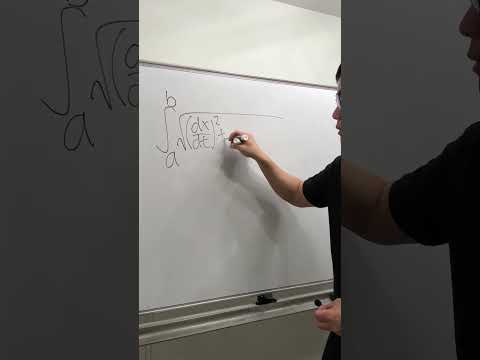Math, but fast!
#math #algebra #calculus #trig #數學 #cálculo #matemáticas
Cursuri interesante:
- Factoring x^2+64
- Dont mix these up! 不要搞錯啊!
- Believe in geometry, not calculus!
- Solving log(x)ln(x)=1
- How to Find the Domain and Range of a Logarithmic Equation
- Cursuri matematica online si gratis
- (Shorts-709) Multiplication | Multiplication Tricks | Maths #shorts #shortsfeed #viral #trending
- (Shorts – 597) Dividing by 91 | Division Tricks | Maths | Math #shorts #trending #shortsfeed #viral
- React, Angular or Node.js Which Tech Skill you need to get job fast
- College Algebra – Curs complet cu cod Python

area of a surface? idk yet future me whats the answer
Is it like 3d arc length?
kind of like a line integral without the function… what is bprp up to?
Brother I’m only a geometry student , blud exploded my brain , like how the flip u differentiate a function you don’t know
As a Calc 1 student this doesnt make any sense
Correct.
It depends on what the limits a and b are representing.
Two ways of considering it:
1.
Let x, y and z the coordinates of a point M in space with respect to an ortho- normal coordinating system with origin O, so is
L=||OM|| =sqrt(x^2 + y^2 + z^2), the norm/magnitue of vector OM, i.e., the length of vector OM
=> dL=d(|OM||) =sqrt(dx^2 + dy^2 + dz^2)
=>∫[√(…)]dt = ∫[dL/|dt|]dt
=> ∫[√(…)]dt = sign(dt) ∫dL
Assuming the point M describes a travel trajectory T of an object over time t, and a and b represent the position on the trajectory f at two different times t1 and t2, t1<t2, then
dt>0, and
∫[√(…)]dt = ∫dL = travel distance along trajectory T from a to b
In the simplest case of linear trajectory
=> ∫[√(…)]dt = (b-a)
2. Alternatively:
Assuming the point M=(x(t), y(t), z(t)) describes a trajectory T of an object traveling with a speed V(t)=[vx(t), vy(t), vz(t)] and a and b represent the positions on the trajectory T at two different times t1 and t2, t1<t2, then
vx(t)=dx/dt
vy(t)=dy/dt
vz(t)=dz/dt
=>
√[(dx/dt)^2 + (dy/dt)^2 + (dz/dt)^2] = ||V(t)||
=> [√(…)]dt = ||V(t)||dt is the travel distance dL during the travel time dt
=> ∫[√(…)]dt = ∫dLdt, is the travel distance from a to b along the trajectory T
No, you can't make me!
Arc length formula for three dimensions?
1
Vector calculus expanded. Root vector v squared integrated from time a to time b. His is the forward approach, mine is the backward!
Looks like arc length on the surface of a volume.
Shouldn't the limits be t1-t2 instead of a-b though?